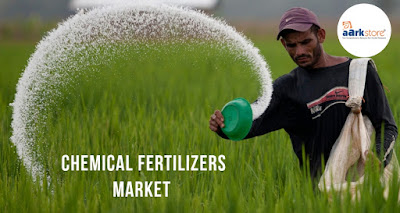This report gives an in-depth analysis of Chemical Fertilizers industry in India. Fertilizers are any solid, liquid or gaseous substances containing one or more plant nutrients. They are either applied to the soil, directly on the plant or added to the aqueous solution; in order to maintain soil fertility, improve crop development, and crop quality. The purpose of fertilizers is to supplement the natural supply of soil nutrient, build up soil fertility in order to satisfy the demand of crops with a high yield potential and to compensate for the nutrients taken by harvested products or lost by unavoidable leakages to the environment, in order to maintain good soil conditions for cropping. Manufactured fertilizers are classified according to different criteria as a number of nutrients, types of combination, physical condition and nutrient release.
With nearly 1.2 billion population, India requires a robust, modernized agriculture sector to ensure the food security to its population. In order to meet the food grain requirements, the agricultural productivity and growth need to be sustained and further improved. It is imperative to manage critical inputs and resources like cultivable land, irrigation, high yielding seeds and fertilizers for a higher food production. In addition, the balanced use of fertilizers, based on the soil conditions will certainly improve the agricultural productivity in India. The fertilizer outlook of India is changing at a rapid pace in the international arena. Indian fertilizers sector needs to catch up with the growth in terms of technology and fertilizers productions. The fortune of the fertilizer industry is highly dependent on factors such as population growth, government policies including incentives and subsidies to lower the cost of fertilizers to the farmers. The fertilizer consumption in India has generally exceeded the domestic production in both nitrogenous and Phosphatic fertilizers, except for few years. The entire requirement of Potassic fertilizers is met through imports, as India does not have commercially feasible sources of Potash. India mainly imports urea, DAP & MOP.
The Indian fertilizer industry has played a pivotal support role in the Indian agricultural industry. The growth in the use of chemical fertilizers amongst the farmers has been the secret of nation’s green revolution in the late of sixties. The main fertilizer used in the state includes nitrogenous fertilizers, phosphate fertilizers, potash fertilizers and complex fertilizers. Today India is the third largest producer and second largest consumer in the of fertilizers in the world. The fertilizers industry is distributed between three major participants’ viz. Private sector undertakings, public sector units and cooperative societies. The Government of India subsidizes fertilizers to ensure that fertilizers are easily available to farmers and the county remains self-sufficient in agriculture and food grain production. The same has been achieved largely by controlling the price of fertilizer and the amount of production.
Key Product Type
• Nitrogen Fertilizers
• Phosphate Fertilizers
• Potash Fertilizers
• Urea
• DAP
• MOP
Category: Food and Agriculture Market Research
Contact Details:
Aarkstore Enterprise
+91 7710006788 | contact@aarkstore.com | aarkstore.com
 |
| India Chemical Fertilizers Market Outlook |
With nearly 1.2 billion population, India requires a robust, modernized agriculture sector to ensure the food security to its population. In order to meet the food grain requirements, the agricultural productivity and growth need to be sustained and further improved. It is imperative to manage critical inputs and resources like cultivable land, irrigation, high yielding seeds and fertilizers for a higher food production. In addition, the balanced use of fertilizers, based on the soil conditions will certainly improve the agricultural productivity in India. The fertilizer outlook of India is changing at a rapid pace in the international arena. Indian fertilizers sector needs to catch up with the growth in terms of technology and fertilizers productions. The fortune of the fertilizer industry is highly dependent on factors such as population growth, government policies including incentives and subsidies to lower the cost of fertilizers to the farmers. The fertilizer consumption in India has generally exceeded the domestic production in both nitrogenous and Phosphatic fertilizers, except for few years. The entire requirement of Potassic fertilizers is met through imports, as India does not have commercially feasible sources of Potash. India mainly imports urea, DAP & MOP.
The Indian fertilizer industry has played a pivotal support role in the Indian agricultural industry. The growth in the use of chemical fertilizers amongst the farmers has been the secret of nation’s green revolution in the late of sixties. The main fertilizer used in the state includes nitrogenous fertilizers, phosphate fertilizers, potash fertilizers and complex fertilizers. Today India is the third largest producer and second largest consumer in the of fertilizers in the world. The fertilizers industry is distributed between three major participants’ viz. Private sector undertakings, public sector units and cooperative societies. The Government of India subsidizes fertilizers to ensure that fertilizers are easily available to farmers and the county remains self-sufficient in agriculture and food grain production. The same has been achieved largely by controlling the price of fertilizer and the amount of production.
Key Product Type
• Nitrogen Fertilizers
• Phosphate Fertilizers
• Potash Fertilizers
• Urea
• DAP
• MOP
Category: Food and Agriculture Market Research
Contact Details:
Aarkstore Enterprise
+91 7710006788 | contact@aarkstore.com | aarkstore.com
No comments:
Post a Comment